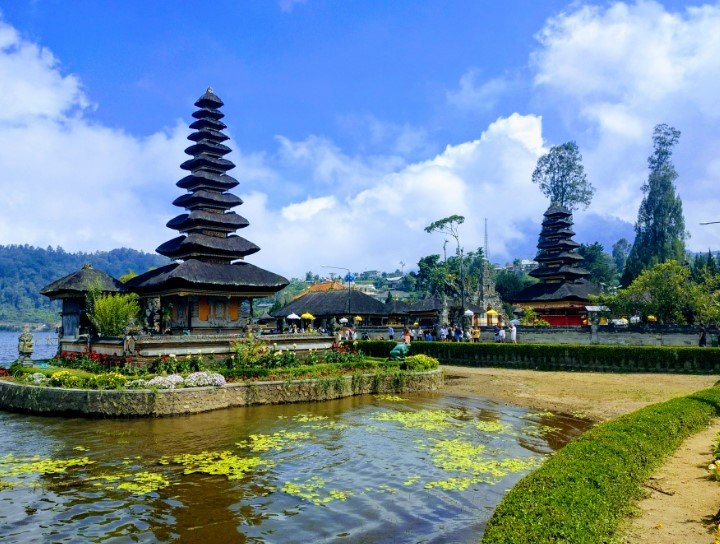Rescue teams race against time as hopes dim for dozens feared lost at sea
It started as a routine ferry trip—a common enough sight in Indonesia’s bustling maritime traffic. But just minutes after pulling away from the port of Banyuwangi in East Java, the KMP Tunu Pratama Jaya capsized in waters that turned deadly fast.
Four people have been confirmed dead. Thirty-two more are still unaccounted for.
And while 29 passengers have been pulled from the sea alive, many of them were found clinging to wreckage or unconscious, adrift for hours in the early hours of Thursday morning.
The ship went down fast, and no one saw it coming
Eyewitness accounts from rescued passengers paint a harrowing scene. Some described a loud, cracking noise, followed by a sudden tilt that sent vehicles tumbling on the ferry’s lower deck. Within minutes, chaos erupted—screaming, scrambling, seawater pouring in.
A fisherman named Sutarno, who happened to be nearby on a small trawler, was one of the first civilians to reach the scene.
“I thought it was thunder at first. But then I saw people waving their hands in the water,” he said, visibly shaken.
Indonesia’s national rescue agency, BASARNAS, was alerted shortly after 8:30 am local time. Within the hour, nine rescue boats were deployed. But it wasn’t enough.
Some made it. Others are still waiting.
Officials confirmed that 29 people were rescued, many of them found drifting in life jackets—exhausted, hypothermic, some unconscious.
“Several victims were brought to shore barely breathing,” said Banyuwangi police chief Rama Samtama Putra. “They had spent hours in the water.”
• Survivors include ferry crew, local travelers, and at least two children
Many survivors had no idea how long they were adrift. One woman said the horizon never seemed to change. “The water just kept going. I thought I was dead already.”

A ferry disaster in a country where sea travel is vital
Indonesia, a nation of more than 17,000 islands, depends heavily on ferries for passenger and cargo transportation. But with dependence comes risk.
The archipelago has long battled issues with maritime safety—old ships, lax enforcement, overcrowding. Accidents like this one, unfortunately, aren’t rare.
Here’s a quick look at major ferry incidents in Indonesia in the past decade:
| Year | Location | Deaths | Cause |
|---|---|---|---|
| 2018 | Lake Toba | 167 | Overloaded ferry capsized |
| 2020 | Sulawesi | 19 | Stormy weather sank vessel |
| 2023 | Flores Sea | 10 | Engine failure + high tide |
| 2025 | Bali (KMP Tunu Pratama Jaya) | 4 confirmed, 32 missing | Under investigation |
This pattern is what frustrates locals the most. “Every year something like this happens, and still nothing changes,” said a port worker who asked not to be named.
Where are the missing? Weather may decide their fate
Weather conditions on Thursday were described as “moderately improving,” giving rescue teams a fighting chance.
Wind speeds had dropped below 15 knots by mid-afternoon. Wave heights, previously topping two meters, had started falling to under one meter. Good news, but the clock is ticking.
BASARNAS chief Henri Alfiandi told reporters, “We’ve got a window. Maybe 12–24 hours before sea conditions change again.”
That margin is crucial. The average adult can survive roughly 24–48 hours in temperate water, assuming a life vest and no injury. But many missing passengers may not have had flotation devices.
One sentence here: That’s what has families onshore clinging to prayers.
What we know—and don’t know—about why it sank
The exact cause remains unclear. Some survivors mentioned the ferry seemed “unbalanced” even before departure. Others said they heard crew arguing about ballast weights before the ship even left the port.
So far, authorities haven’t ruled anything out:
-
Overloading, poor weather, or mechanical failure are all under review
-
Maritime Ministry said the vessel passed inspection last month
-
Black box data and captain’s statement are pending release
Transport officials have ordered a suspension of ferry services along the Banyuwangi–Gilimanuk route pending inspection. A full investigation is now underway.
Local communities feel the weight—again
In East Java, entire fishing villages have turned into makeshift rescue posts. Some are handing out hot tea and blankets. Others are scanning the shoreline with binoculars.
It’s happened before. It’ll probably happen again.
And that bitter truth is what makes this tragedy hit harder than most.
“This is not just news to us. This is our brothers and sisters,” said Wati Ningsih, a volunteer nurse from Ketapang. “Every one of us knows someone who rides those ferries.”
Just hours after the accident, a list with names of the missing began circulating at a local mosque. Cries of family members echoed as names were read aloud.
One man collapsed on the concrete steps. His daughter was onboard.
Looking ahead with heavy hearts and frayed nerves
By nightfall, search operations were still underway, now with the help of helicopters and drones. Divers were being deployed to the presumed sinking site just 2 nautical miles off the coast.
But no one is pretending this is going to end well.
“There’s always hope,” said rescue diver Ahmad Yusuf. “But we also know the ocean can be merciless.”
And just like that, another name joins the long, grim ledger of maritime losses in one of the world’s busiest island nations.
